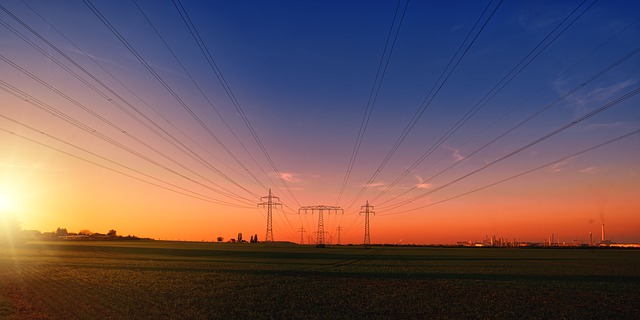Voltage
Voltage is an electromotive force or potential difference measured in Volts. In an electrical circuit’s power source, voltage is the force that moves electrons, as a current, through a conducting loop. It can be imagined in the same way as water pressure forcing water around a plumbing system.
The term 'potential difference' refers to the energy difference between two points in a circuit, and is a measure of how much potential energy exists to move electrons from one point to another. This quantity determines the amount of work that can be done through the circuit.
The unit ‘volt’ (V) was named after the physicist Alessandro Volta who invented the voltaic pile, an early form of household battery. The voltage between two points in a circuit can be measured using a voltmeter. One volt is the difference in electric potential between two points of a conducting loop when a current of one ampere dissipates one watt of power between those points.
Voltage can be either a direct current (DC), as in the case of the potential difference between the terminals of an electrochemical cell, or alternating current (AC), as in the case of the terminals of a common utility outlet. Direct current maintains the same polarity while in an alternating current it reverses direction periodically. The frequency, measured in hertz (Hz), is the number of cycles per second.
Life safety and firefighting power supplies, second edition, written by Tony May and published by BSRIA in 2021, gives the following definitions of supply voltage:
- Extra low voltage (ELV) - 50 V or less
- Lov voltage (LV) - 50 V to 1 kV
- Medium voltage (MV) - 1 kV to 36 kV
- High voltage (HV) - 36 kV to 150 kV
- Extra high voltage (EHV) - more than 150 kV
[edit] Related articles on Designing Buildings
- Ampere.
- Electrical energy.
- Electricity.
- Electricity supply.
- Glossary of electrical terms.
- Kilowatt hour.
- Low voltage.
- Rapid voltage changes.
- Transient voltage.
- Voltage interruptions.
- Voltage sag.
- Voltage swell.
- The Future of Electricity in Domestic Buildings.
- Uninterrupted power supply for buildings.
- Watt.
Featured articles and news
C20 Society; Buildings at Risk List 2025
10 more buildings published with updates on the past decade of buildings featured.
Boiler Upgrade Scheme and certifications consultation
Summary of government consultation, closing 11 June 2025.
Deputy editor of AT, Tim Fraser, discusses the newly formed society with its current chair, Chris Halligan MCIAT.
Barratt Lo-E passivhaus standard homes planned enmasse
With an initial 728 Lo-E homes across two sites and many more planned for the future.
Government urged to uphold Warm Homes commitment
ECA and industry bodies write to Government concerning its 13.2 billion Warm Homes manifesto commitment.
From project managers to rising stars, sustainability pioneers and more.
Places of Worship in Britain and Ireland, 1929-1990. Book review.
The emancipation of women in art.
Call for independent National Grenfell oversight mechanism
MHCLG share findings of Building Safety Inquiry in letter to Secretary of State and Minister for Building Safety.
The Architectural Technology Awards
AT Awards now open for this the sixth decade of CIAT.
50th Golden anniversary ECA Edmundson awards
Deadline for submissions Friday 30 May 2025.
The benefits of precast, off-site foundation systems
Top ten benefits of this notable innovation.
Encouraging individuals to take action saving water at home, work, and in their communities.
Takes a community to support mental health and wellbeing
The why of becoming a Mental Health Instructor explained.
Mental health awareness week 13-18 May
The theme is communities, they can provide a sense of belonging, safety, support in hard times, and a sense purpose.
Mental health support on the rise but workers still struggling
CIOB Understanding Mental Health in the Built Environment 2025 shows.
Design and construction material libraries
Material, sample, product or detail libraries a key component of any architectural design practice.
























